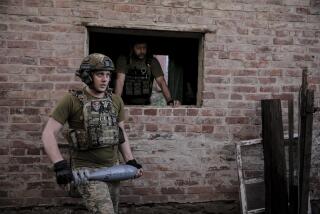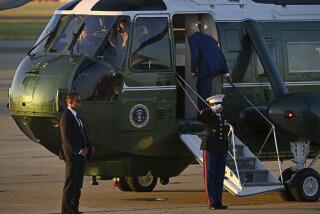Drone strikes: Who’s on the ‘kill list’

- Share via
Who decides who will be killed by U.S. drone attacks? Protectors of civil liberties have expressed dissatisfaction with the present system of unreviewed presidential discretion, whether in the hands of George W. Bush or Barack Obama.
Must an individual have attacked America or Americans to make the “kill list”? Are the standards higher if the target is a U.S. citizen? How much “collateral damage” is acceptable? And, above all, how comfortable are we with one person, albeit the commander in chief, making these decisions?
Sen. Dianne Feinstein (D-Calif.), chairwoman of the Senate Intelligence Committee, has suggested that a judicial panel might be added to the process. Other suggestions include using the intelligence committees of both houses of Congress.
A judicial drone panel would be similar in concept to the court set up by the Foreign Intelligence Surveillance Act of 1978, in which federal judges decide on warrants to allow eavesdropping in national security cases. They make their judgments on the familiar legal basis of whether there is probable cause to suspect a crime has been committed. However, it would not be appropriate here. It is an entirely different kind of decision to weigh the value of a target and collateral damage in a drone attack. Nothing in a judge’s training prepares him or her to make that decision, and this approach confuses the government’s role in prosecuting criminals with the government’s role in carrying out a war.
Involving congressional oversight committees is also an inadequate solution. They can’t move quickly; yet delay could cause opportunity to vanish. Further, such decision-making isn’t a comfortable fit with Congress’ legislative or oversight functions, and if it were, it is the entire Congress, not just some members, in whom Article 1 of the Constitution vests authority. Obviously, submitting these questions to the entire Congress would be unworkable.
There is another answer: In 1973, the War Powers Resolution became law as an accommodation to the swift realities of modern war. Rather than exercise its constitutional power to declare war, Congress may vote to authorize the use of force within 60 days after U.S. armed forces are “introduced into hostilities.” If Congress does not pass such an authorization, the action must cease.
The War Powers Resolution respects the Constitution’s requirements: Congress makes the initial judgment on war but then hands over to the president the authority to wage it. After 9/11, under this law, Congress authorized the president “to use all necessary and appropriate force against those nations, organizations or persons” connected with the attack “to prevent any future acts of international terrorism against the United States.”
But the 9/11 resolution may not extend to drone cases now being considered, which have little to do with the specific groups that attacked us a decade ago. A new resolution could give the president the authority to make use of drones as a necessary and appropriate force against current iterations of Al Qaeda and other specified terrorist organizations, for a certain period of time.
Declarations of war don’t have a cutoff date, but this is a different situation. In traditional wars, the government will eventually negotiate a truce or a peace treaty with an enemy state, ending the authority granted. In the war on terrorism, however, there is no responsible country on the other side with which to negotiate, so Congress will need to review the authority periodically.
Two presidents have defied the War Powers Resolution (Bill Clinton and Obama); others (George W. Bush and George H.W. Bush) have abided by it without admitting that it is binding. With 36 other members of Congress (including Republican Ron Paul and Democrat Dennis Kucinich), I brought a lawsuit in 1999 against President Clinton for bombing Yugoslavia for more than 60 days without obtaining congressional approval. The case was dismissed for lack of standing. President Obama conducted war in Libya in excess of 60 days without a resolution, and members of Congress sued once again; the case was also dismissed for lack of standing. Hence, the constitutionality of the War Powers Resolution has never been settled.
Congress should pass a new resolution to cover drone attacks, and the Supreme Court should decide its constitutionality. In so doing, the balance of powers would be restored. The court would be fulfilling its appropriate constitutional responsibility, and if this approach were upheld, so would Congress and the president.
Tom Campbell, dean of the Chapman University Law School, served five terms as a Republican congressman from California.
More to Read
A cure for the common opinion
Get thought-provoking perspectives with our weekly newsletter.
You may occasionally receive promotional content from the Los Angeles Times.









